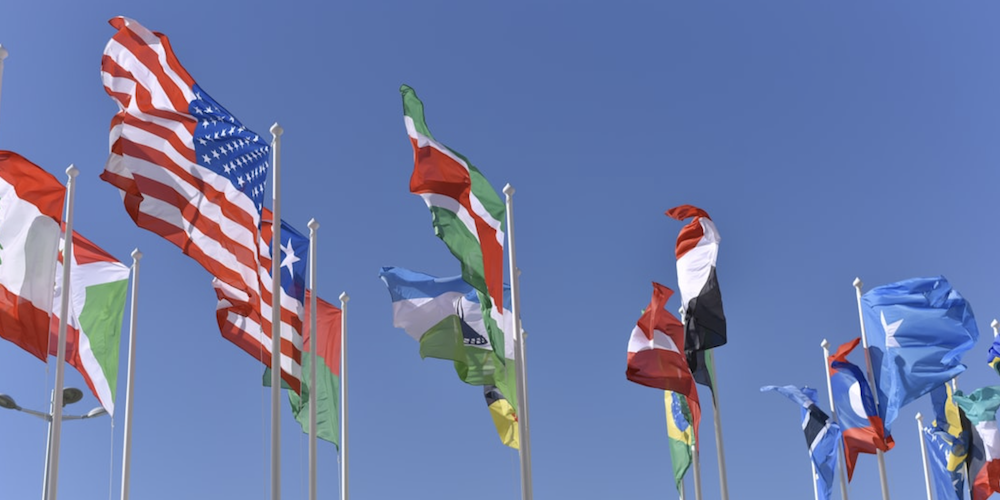Why Global Citizenship Education Should Become U.S. Policy
Few teachers try to fill the gap between what their students want to learn about the world and what schools mandate.

Young people are no strangers to accusations of passivity or apathy when it comes to political and social issues. Many of them don’t even bother to vote. But a rise in youth activism around the world in recent years challenges long-held assumptions. In the United States, despite numerous schools’ decisions to ban books or limit access to other information, and parents’ insistence on influencing what material is taught in public classrooms, many high school students have tried to make their voices heard and make a difference on matters such as climate change, gun control, social justice and war.
What role, if any, does formal education play in producing young citizens who not only care about policies that affect their future, but also want to be part of the debate? What do students learn about the rest of the world and its impact on their lives? The concept of global citizenship education helps to answer these questions — or at least to begin doing so. I recently completed a doctorate in education, and this was the topic of my dissertation. After years of asking questions as an educator, I wanted to learn about the best practices in other countries that prepare students to understand the world around them and become global citizens. My discoveries changed my thinking about how we should educate young Americans.
While other countries have adopted policies to teach students to be aware of global issues, learn from differing perspectives and build a value system focused on justice and human rights, U.S. schools remain largely inert. In Finland, with its rich history of socially minded education initiatives, it was a natural progression to focus on global citizenship. The subject is part of Brazil’s reform proposal calling for mandatory courses in the elementary grades. South Korea’s efforts focus on pro-democracy development themes. In the United States, however, social media often has a bigger influence on students than what they learn in school.
Young Americans have already signaled what interests them and what they wish to understand in terms of how the challenges they face go beyond national borders. They have also indicated their willingness to act for change where they see threats to democracy, humanity and equal opportunity. What they don’t have are enough teachers trained to support them in their learning. My research showed that teachers want to respond to students’ questions and concerns about the world and its complexities. But they are not adequately equipped to do so.
Last year, while working on my doctorate, I completed the Washington International Diplomatic Academy’s (WIDA) one-year certificate training program. During the classes on diplomatic tradecraft and the many simulations we did, we learned about the difficulty of the work of diplomats engaged in regional alliances and international institutions. I considered how useful such an understanding can be for students learning to be global citizens. Although the State Department runs large exchange programs, the number of students, scholars or teachers who get to participate in them is still significantly limited. To expand global awareness and competency, it is up to teachers here at home to offer such learning to most students. But they barely have institutional or policy support.
Even with these limitations, some schools have used an approach called “structured academic controversies.” Students work cooperatively in small teams to learn and discuss controversial issues from multiple perspectives. The goal of this learning is to develop skills that students use to build consensus. As they hear the views of others and put forth their own, polite agreement and forms of persuasion that do not hurt the sentiments of others emerge as important skills.
The United Nations’ Sustainable Development Goals are a useful tool for teaching global citizenship education. Adopted in 2015, these 17 goals focus on addressing the biggest challenges the world faces today. One goal actually focuses on education, and specifically on advancing global citizenship education through the U.N. Education, Scientific and Cultural Organization (UNESCO), which helps to develop international policy to encourage partnerships in the field. The United States rejoined UNESCO in July after a five-year absence. The 17 goals made it clear that the term “global” no longer refers mainly to economics and trade, as was the case in the 1990s, but to almost all areas of our lives — and it involves countries in the so-called Global South just as much as those in the Global North.
The transformational power of global citizenship education is reflected in the works of such scholars as the Brazilian Paolo Freire and the American John Dewey. In the second half of the last century, Freire championed teaching the ability to “read” the society around us and drew a connection between education and political outcomes. In the first half of the 20th century, Dewey’s work focused in large part on how critical reflection happens and on the circumstances that influence it. He fused education with political change and advocated for developing young people into “active social beings.”
Thanks to social media and the frantic speed with which information goes around the world today, the level of global citizenship education in the United States can easily become apparent to audiences in the other countries, which make conclusions about American youth and society. That affects foreign perceptions and should concern U.S. public diplomacy officials.
Global citizenship education is growing in informal settings, as teachers try to fill the gap between what their students want to learn and what schools and other institutions mandate. But it’s not yet a policy priority in the United States. It should be.

